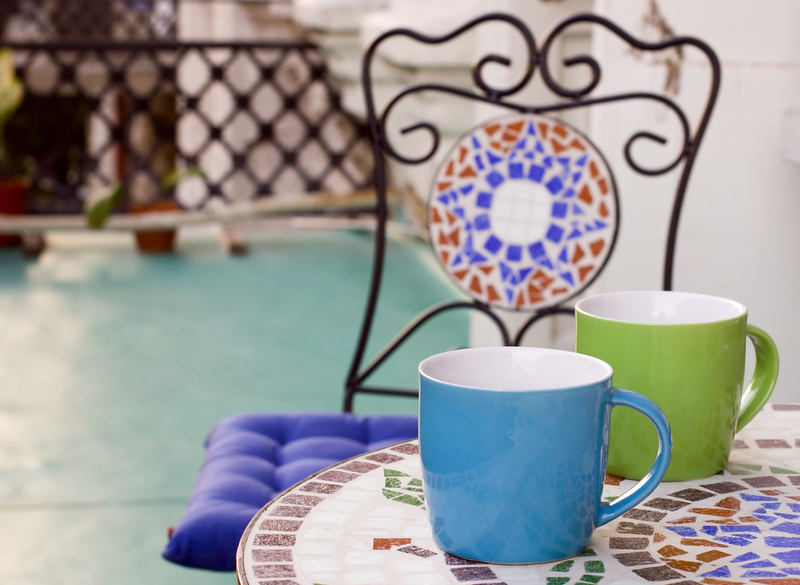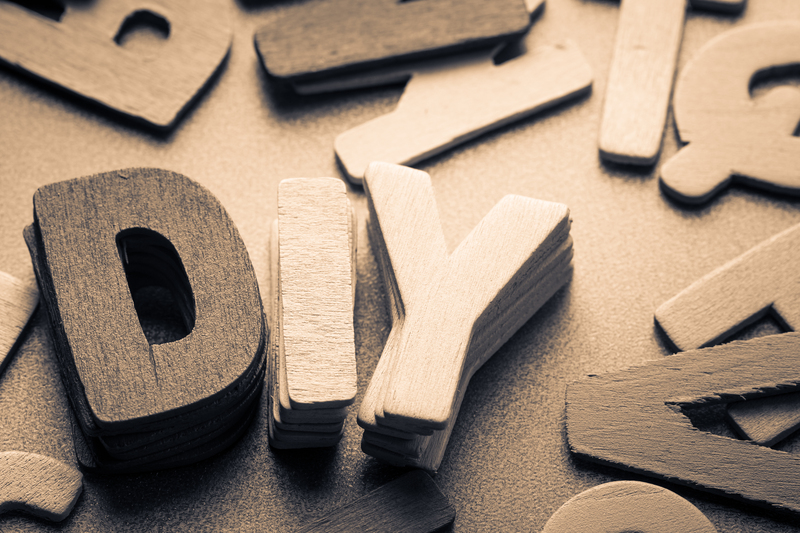Long-Term Clutter Management: Strategies for a Tidy Home
Are you tired of the never-ending battle against household mess? Achieving and sustaining a consistently organized living space isn't a one-time activity--it's a long-term commitment. Long-term clutter management involves adopting systems, habits, and mindsets that help you maintain a tidy home day after day, year after year. In this comprehensive guide, we'll explore proven strategies for clutter prevention, organization, and the ongoing maintenance that leads to lasting home orderliness.
Why Long-Term Clutter Management Matters
Many people engage in periodic decluttering projects--maybe during spring cleaning or before moving houses--but find themselves surrounded by clutter again after a few months. This cycle can cause stress and frustration, making your home feel unwelcoming or chaotic. Long-term clutter management is about breaking this cycle, so tidiness becomes second-nature, supporting your health, productivity, and peace of mind.
- Reduces stress: Visual clutter and disorganization are proven sources of anxiety and overwhelm.
- Boosts productivity: A tidy environment enhances focus and efficiency in daily tasks.
- Improves safety: Clutter, especially in walkways or on stairs, can be a tripping hazard.
- Enhances well-being: Coming home to a neat space is uplifting and calming.

Principles of Sustainable Clutter Control
The key to long-lasting home organization lies in changing your approach to "stuff." Rather than just moving things around, focus on minimizing, maintaining, and being mindful of what you bring into your home. Here are the foundational principles behind all effective clutter management strategies:
- Simplicity: The less you have, the easier it is to keep everything tidy.
- Consistency: Regular habits prevent mess from accumulating unnoticed.
- Intentionality: Mindful choices about new purchases and possessions guard against fresh clutter.
- Accessibility: Easy-to-maintain systems ensure ongoing organization.
- Flexibility: Adapting methods to your evolving needs and spaces keeps things functional and practical.
Essential Strategies for Tidy Home Maintenance
1. Adopt the "One In, One Out" Rule
To stop clutter before it starts, make it a firm policy to let something go every time you bring a new item into your home. Buy a new shirt? Donate or toss one you no longer wear. Acquiring appliances, toys, or even decorations should always prompt you to remove a similar object. This habit prevents your total belongings from growing unchecked.
2. Systematize Decluttering Sessions
Instead of relying on sporadic major cleanouts, schedule short, regular clutter management sessions. Consider monthly or even weekly 20-minute decluttering routines by category or room:
- Kitchen: Remove expired foods, duplicates, or utensils you never use.
- Bedroom: Assess clothing and linens for what can be donated or recycled.
- Living room: Contain magazines, books, remote controls, and electronic gadgets.
- Bathroom: Discard old cosmetics, expired medications, or broken accessories.
3. Master the Art of Storage Solutions
Smart storage is essential for long-term tidiness. Invest in organizational tools that suit your space and lifestyle. Popular options include:
- Bins and baskets: Great for grouping similar items (toys, paperwork, seasonal decor).
- Drawer organizers: Prevent drawers from becoming chaotic catch-alls.
- Shelving units: Use vertical storage to maximize space in closets and garages.
- Labeling: Clear labels make it easy for all household members to return things to their places.
Remember, storage shouldn't be an excuse to keep unnecessary items--use it to enhance access and order, not to hide clutter.
4. Create Drop Zones for Daily Items
Entryways are notorious clutter magnets. Set up designated spots for keys, mail, bags, and shoes--a tidy home starts at the door. By establishing these landing zones, you'll immediately reduce the surface clutter that seems to multiply overnight.
5. Digitize Paperwork
Paper can be one of the biggest sources of household mess. Switch to electronic statements when possible, scan important documents, and recycle junk mail as soon as it arrives. Use cloud storage or secure folders for digital organization, and keep a small file for legal documents that must be hard copies.
6. Practice Mindful Shopping and Gifting
The less that enters your home, the less you'll need to manage. Before buying something new, pause and ask:
- Do I really need this?
- Do I already own something similar?
- Where will this live in my home?
Encourage friends and family to give experiences or consumables instead of physical gifts, which lowers the risk of future clutter.
7. Get the Whole Household Involved
Clutter management for a tidy home shouldn't fall on one person alone. Assign age-appropriate organizing tasks to each family member. Teach kids to put toys away daily, encourage roommates to sort mail, and agree on shared standards for cleanliness.
8. Reevaluate Routinely
Needs and tastes change over time. Set aside time annually (perhaps at New Year's or back-to-school) to review possessions and household systems:
- Is your current storage still working?
- Are there new sources of clutter cropping up?
- Which items are now obsolete, broken, or unused?
Letting go is a process, not a single event.
Room-by-Room Clutter Control Tips
Entryway
- Install wall hooks or cubbies for coats, hats, and bags.
- Place a tray or bowl for keys and loose change.
- Assign a basket or bin for incoming mail and recycle daily.
Kitchen
- Keep countertops clear except for daily essentials.
- Group pantry items by use (baking, snacks, canned goods) in labeled containers.
- Store pots, pans, and utensils close to where they're used.
- Regularly purge expired food and unused gadgets.
Living Room
- Opt for furniture with hidden storage, such as ottomans or cabinets.
- Corral remote controls, chargers, and tech accessories in drawer organizers or baskets.
- Rotate decorative items seasonally to avoid crowding surfaces.
Bedroom
- Edit your wardrobe using the "love it, wear it, fits it" rule.
- Store off-season clothing in vacuum-sealed bags.
- Keep nightstands clutter-free; limit items to books, lamps, and an alarm clock.
Bathroom
- Dispose of empty bottles and expired products regularly.
- Use drawer dividers for cosmetics, grooming tools, and medicines.
- Store towels and toilet paper in baskets or on shelves out of the way.
Home Office
- Digitize files and minimize paper storage.
- Organize cords and tech peripherals with clips or cable boxes.
- Designate a place for office supplies and clear your desktop daily.
Maintaining Motivation for Ongoing Organization
Staying organized long-term requires ongoing motivation. Here are ways to stay focused on home decluttering and avoid backsliding into old habits:
- Set tangible rewards for completed decluttering sessions--enjoy a movie night or treat yourself to something enjoyable.
- Document your progress--take before-and-after photos to remind yourself of how much better your home feels and looks.
- Share your goals with friends, family, or social groups for added accountability.
- Practice gratitude for what you have, learning to cherish space and experiences over possessions.
Remember, progress is more important than perfection.
Common Clutter Pitfalls--and How to Avoid Them
- Storing "just in case" items: If you haven't used it in the last 12 months, chances are you won't need it again. Pass it on.
- Confusing storage with decluttering: Don't simply shuffle objects into pretty boxes--evaluate if you really need them first.
- Acquiring more storage instead of reducing items: More bins are only a temporary fix unless you also reduce what's stored.
- Neglecting high-traffic areas: Daily-use spaces need frequent revisiting to stay tidy.
- Not involving housemates: Teamwork keeps the whole home clutter-free.

Benefits of a Well-Managed, Clutter-Free Home
By adopting long-term clutter management techniques, you'll quickly notice major improvements:
- Easier cleaning: Less clutter facilitates quicker and more effective cleaning routines.
- More inviting spaces: Guests and family alike will feel more comfortable in open, airy rooms.
- Financial mindfulness: Reducing impulse purchases and lost items saves money.
- Enhanced mental clarity: A calm environment supports a calm mind.
These are just a few rewards you can expect from a life free from chronic clutter.
Conclusion: Building a Tidy Home for Life
Mastering long-term clutter management is the ultimate form of self-care for your home. Success comes from building simple habits, smart systems, and the willingness to let go of what no longer serves you. By regularly evaluating your possessions, involving your household, and using the practical strategies outlined above, you can enjoy the benefits of a tidy, relaxing, and organized living space--not just today, but for years to come.
Ready to transform your home into a perpetually clutter-free zone? Begin with one strategy, stay consistent, and watch how manageable--and enjoyable--home organization can become!